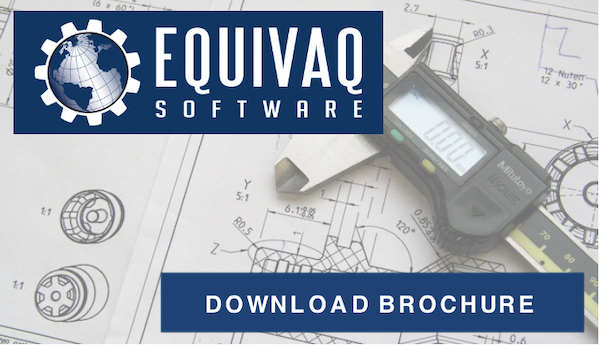It seems we get a lot of questions from our clients about how to integrate PDM with ERP or MRP systems. Have you concluded this is the hidden treasure of gems in the PDM world and you're going to need Indiana Jones to find this buried treasure??
There are 3 types of ERP/MRP integration strategies: Coupled, De-Coupled and Portals. Some provide better use of time and resources, but I'll let you be the judge of that for your organization.
COUPLED Integration
Coupled ERP integration a strategy that uses a business system that links the PDM and ERP together for a bi-directional link so both systems share information back and forth. This can be accomplished using an integration software like Microsoft SQL Server Integration Services (SSIS) that collects data packets from one system (PDM) and distributes those data packets to the right place in the other system (ERP). There are numerous business rules required to manage and audit this type of an integration to ensure both systems behave according to the rules. This "hands off" integration requires logs of the errors or data packets that did not get transferred correctly so a System Administrator can later manually import the data packet. Coupled integration is rare and cost prohibitive due to the significant customization required to make the systems talk in all case scenarios of data.
DE-COUPLED Integration
De-Coupled ERP integration is a file exchange between two systems where one system (PDM) exports a CSV or XML file to a network folder location (i.e. neutral zone) where the other system (ERP) "consumes" that data packet and logs the results. When the ERP system detects an updated CSV or XML file in the neutral zone, it "consumes" that data into the right tables within the ERP System. This is where the DocumentID from the PDF would be most effective. De-Coupled integration is the most common ERP integration we encounter with our customers.
PORTALS
Portals are popup windows in PDM that "peek" inside the ERP system for bits of data such as stock status, open ECO's or manufacturing runs for the part. The Portal opens a window linked to the ERP using the DocumentID or drawing number and displays the results. The popup window is usually read-only which is intended for viewing only so data cannot be changed in the ERP from PDM. Data Portals are common and cost effective, especially when a Coupled or De-Coupled integration is not cost effective for the size of your organization.
Schedule a meeting with us to learn more about the resources and experience you need for successfully integrating PDM with your ERP System.
Believe in the Q!






 EQUIVAQ SOFTWARE offers Apps to enhance the lives of SOLIDWORKS PDM Administrators and users by offering advanced PDM Add-in Apps for an affordable monthly license fee in order to bring PDM automation within reach.
Our products are straight forward and come with detailed easy setup instructions to get you started.
EQUIVAQ SOFTWARE offers Apps to enhance the lives of SOLIDWORKS PDM Administrators and users by offering advanced PDM Add-in Apps for an affordable monthly license fee in order to bring PDM automation within reach.
Our products are straight forward and come with detailed easy setup instructions to get you started.